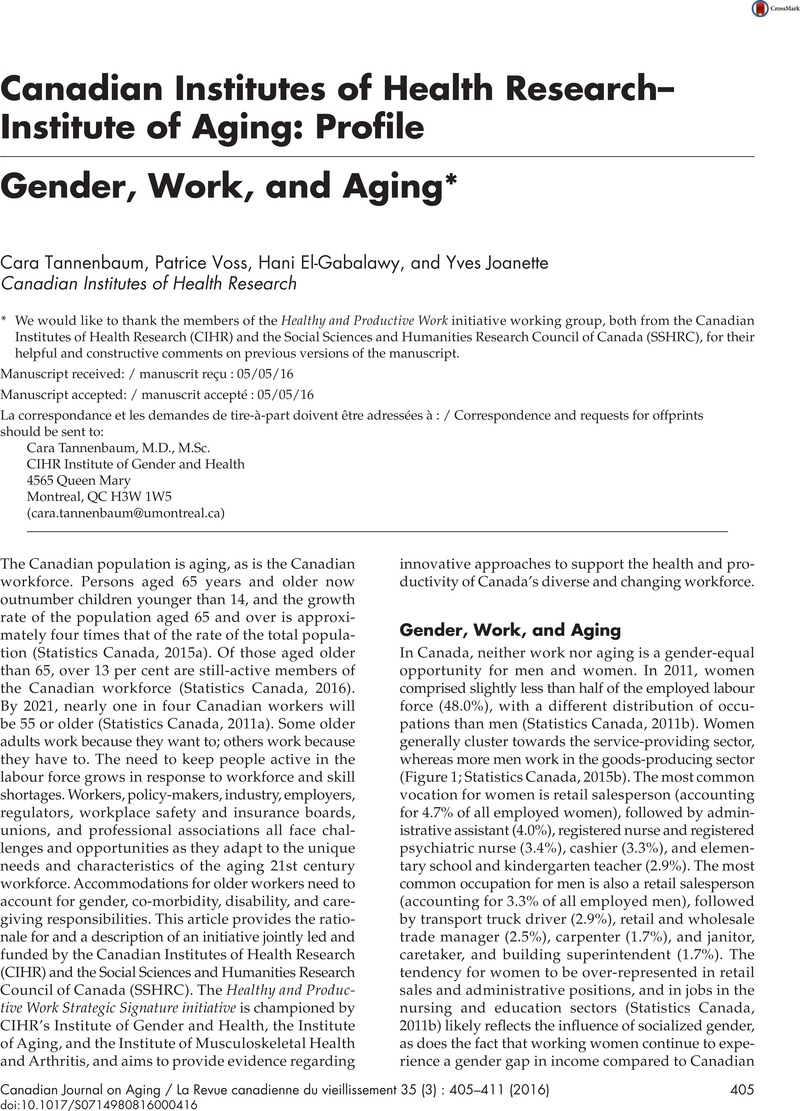Crossref Citations
This article has been cited by the following publications. This list is generated based on data provided by Crossref.
Zelmer, Jennifer
van Hoof, Krystle
Notarianni, MaryAnn
van Mierlo, Trevor
Schellenberg, Megan
and
Tannenbaum, Cara
2018.
An Assessment Framework for e-Mental Health Apps in Canada: Results of a Modified Delphi Process.
JMIR mHealth and uHealth,
Vol. 6,
Issue. 7,
p.
e10016.
Joanette, Yves
Martin-Matthews, Anne
Hebert, Réjean
and
Goldberg, Joanne
2019.
Reaching the Age of Majority: The Life Trajectory of the CIHR Institute of Aging.
Canadian Journal on Aging / La Revue canadienne du vieillissement,
Vol. 38,
Issue. 1,
p.
1.
Gupta, Neeru
Lavallée, René
and
Ayles, James
2019.
Gendered effects of pay for performance among family physicians for chronic disease care: an economic evaluation in a context of universal health coverage.
Human Resources for Health,
Vol. 17,
Issue. 1,
Joanette, Yves
Martin-Matthews, Anne
Hébert, Réjean
and
Goldberg, Joanne
2019.
Arriver à l’âge de la majorité: La trajectoire de vie de l’Institut du vieillissement des IRSC.
Canadian Journal on Aging / La Revue canadienne du vieillissement,
Vol. 38,
Issue. 1,
p.
7.




